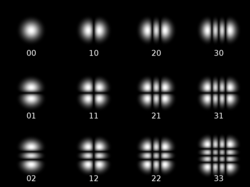ARG
0
- Joined
- Feb 27, 2011
- Messages
- 6,772
- Points
- 113
<rant>
Beam size measurements. It's the easiest thing to do! All it requires is a device that measures length, ruler, tape measure, calliper, meter stick, anything! It's not like a power measurement that requires a 200$ LPM.
Yet I rarely see this included in reviews & when people are selling lasers. Buyers are equally as bad, hardly anyone asks for the beam size when buying a laser.
Take Lazerer for example, they can afford to invest in an 200$ LPM and they provide power measurements for the lasers they sell but they can't invest in a 2$ ruler and provide beam size and divergence measurements?
A good example of this are these stick/crown upgrade lasers. They have MASSIVE beams! A quality 100mW laser with a tiny beam looks just as bright!
LZSK - Stick 532nm 500mW High Power DPSS Green Laser Pointer
Everyone is always after "POWER POWER POWER" but what really makes a beam bright and beautiful is power density, and that is dependent on the beam size & divergence as well as the power!
Almost every review I see, even by vets, don't include the beam size, but include LPM charts. Just today I was looking at high power 532nm laser reviews, and not ONE person had included the beam size, usually high power 532nm lasers have ugly beams, and having a tiny TEMOO beam is worth much more than having a few hundred more milliwatts.
What I'm trying to say is please stop this trend of only looking at a lasers output. There's much more to a quality laser than having the highest power. Take the time and post a beam size & divergence measurement with your laser when reviewing it or selling it.
</rant>
P.S. Here's an easy tool to calculate divergence! pseudonomen137's JScript mRad Calculator
Beam size measurements. It's the easiest thing to do! All it requires is a device that measures length, ruler, tape measure, calliper, meter stick, anything! It's not like a power measurement that requires a 200$ LPM.
Yet I rarely see this included in reviews & when people are selling lasers. Buyers are equally as bad, hardly anyone asks for the beam size when buying a laser.
Take Lazerer for example, they can afford to invest in an 200$ LPM and they provide power measurements for the lasers they sell but they can't invest in a 2$ ruler and provide beam size and divergence measurements?
A good example of this are these stick/crown upgrade lasers. They have MASSIVE beams! A quality 100mW laser with a tiny beam looks just as bright!
LZSK - Stick 532nm 500mW High Power DPSS Green Laser Pointer
Everyone is always after "POWER POWER POWER" but what really makes a beam bright and beautiful is power density, and that is dependent on the beam size & divergence as well as the power!
Almost every review I see, even by vets, don't include the beam size, but include LPM charts. Just today I was looking at high power 532nm laser reviews, and not ONE person had included the beam size, usually high power 532nm lasers have ugly beams, and having a tiny TEMOO beam is worth much more than having a few hundred more milliwatts.
What I'm trying to say is please stop this trend of only looking at a lasers output. There's much more to a quality laser than having the highest power. Take the time and post a beam size & divergence measurement with your laser when reviewing it or selling it.
</rant>
P.S. Here's an easy tool to calculate divergence! pseudonomen137's JScript mRad Calculator







